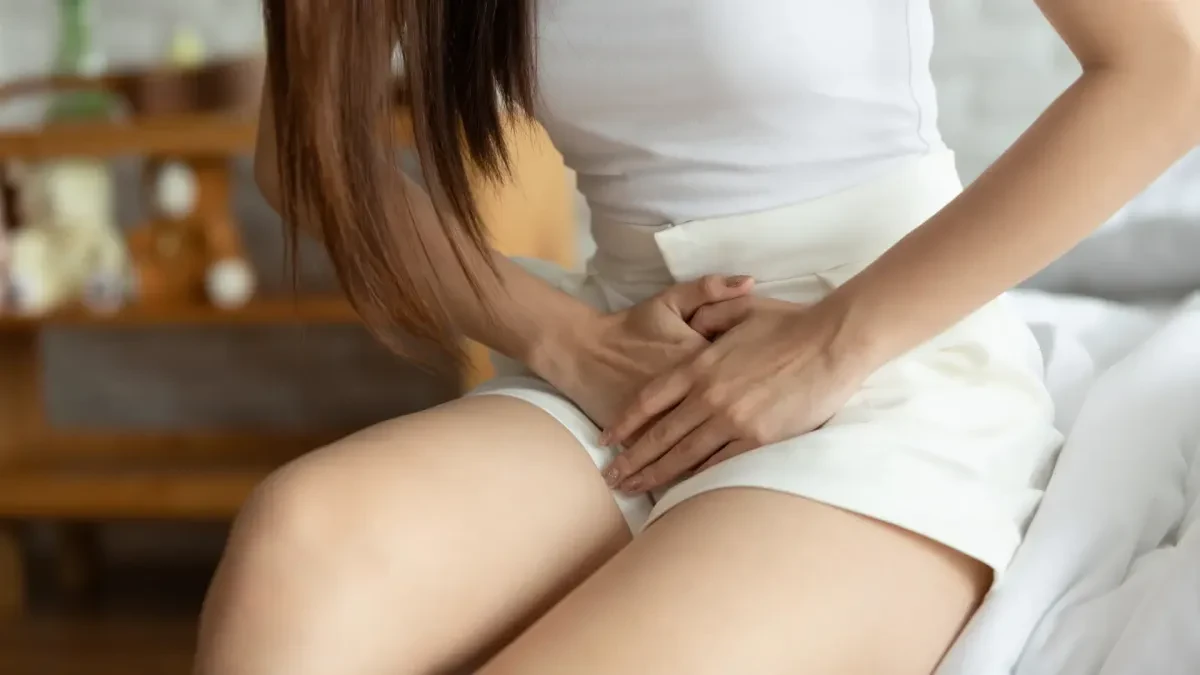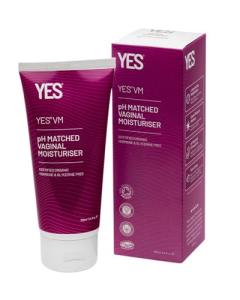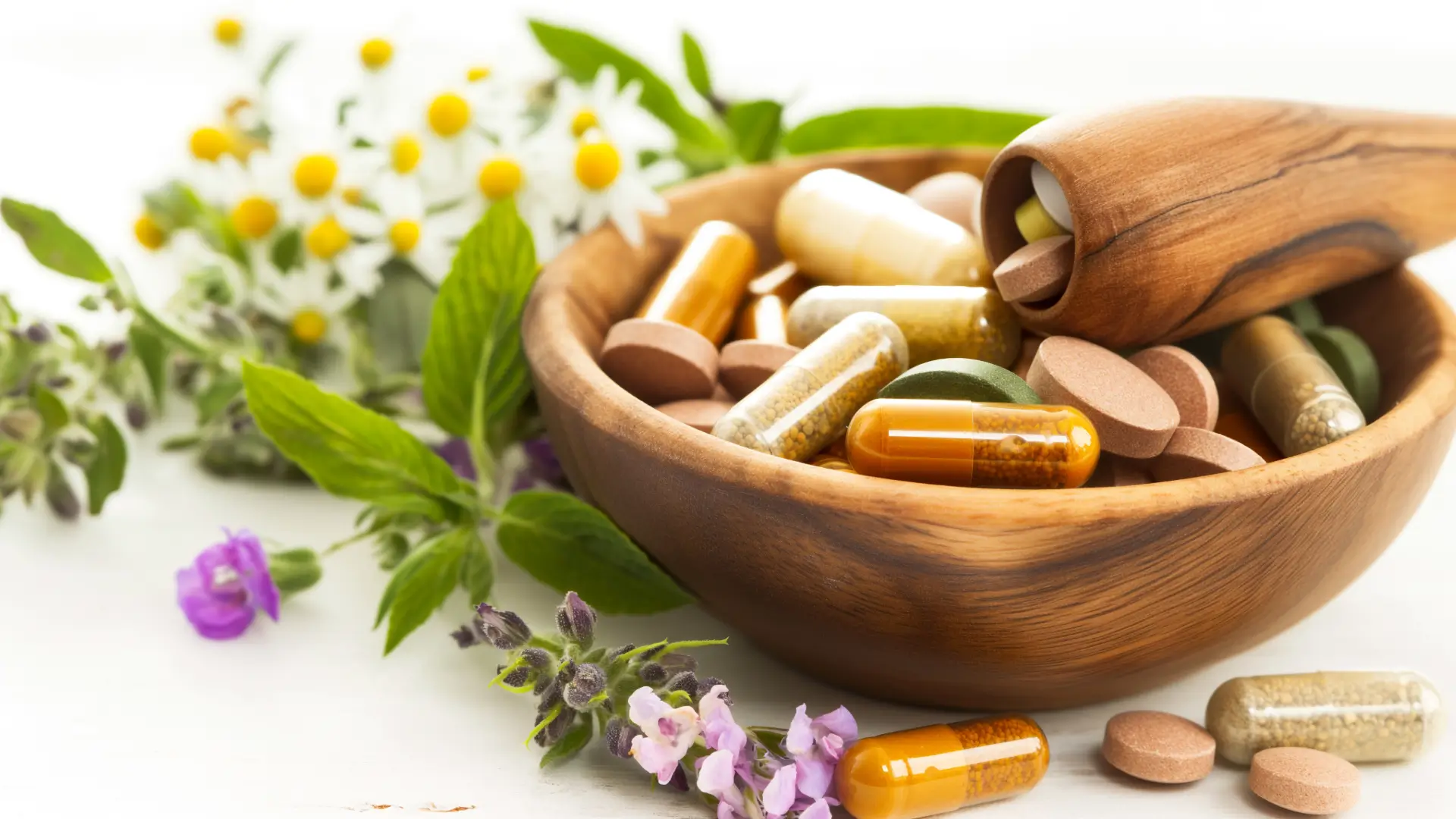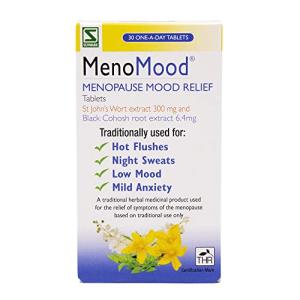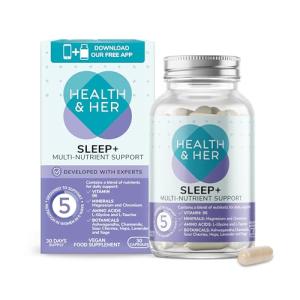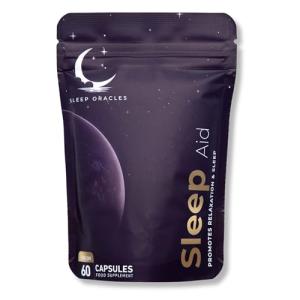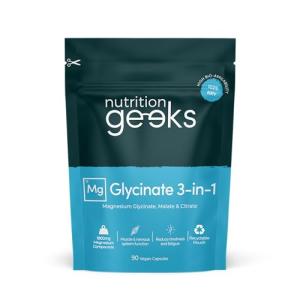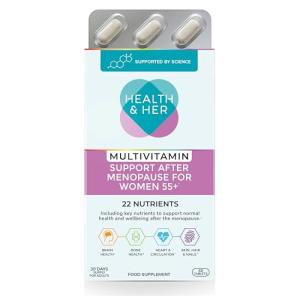Let me start with a story that might sound familiar. Last month, Sarah, a 47-year-old teacher from Manchester, messaged me in desperation. "I feel like my body has betrayed me," she wrote. "Intimacy with my husband has become uncomfortable, and I'm constantly aware of this dry, irritated feeling. My GP said it's 'normal for my age,' but normal doesn't mean I have to suffer, does it?"
Sarah's experience echoes that of countless women I've worked with over the years. Perimenopause vaginal dryness affects up to 84% of women during this transitional phase, yet it remains one of the most under-discussed symptoms. The silence around intimate health during menopause leaves many women feeling confused, embarrassed, and unsure where to turn for help.
Here's what I want you to know: vaginal dryness during perimenopause isn't just "something to put up with." It's a treatable condition with multiple solutions, and understanding why it happens is the first step towards reclaiming your comfort and confidence.
Understanding What Causes Vaginal Dryness During Perimenopause
The root cause of perimenopause vaginal dryness lies in the dramatic hormonal shifts occurring in your body. As your ovaries gradually reduce oestrogen production, sometimes as early as your late thirties, every tissue that depends on this hormone begins to change.
Your vaginal walls contain oestrogen receptors that have relied on steady hormone levels throughout your reproductive years. When oestrogen declines, several changes occur:
Tissue thinning: The vaginal walls become thinner and less elastic, a process called vaginal atrophy. What was once plump, well-cushioned tissue becomes more fragile.
Reduced blood flow: Lower oestrogen means decreased circulation to the genital area, reducing the natural lubrication your body produces.
pH changes: Your vaginal environment becomes less acidic, potentially leading to increased irritation and susceptibility to infections.
Collagen loss: Just as your skin loses collagen during menopause, so do your intimate tissues, affecting their ability to maintain moisture.
I often explain this to clients using what I call the "garden analogy." Imagine your vaginal tissues as a well-watered garden that has thrived for decades. Suddenly, the regular rainfall (oestrogen) becomes irregular and eventually stops. Without consistent moisture, the soil becomes dry and cracked, and the plants struggle to maintain their vitality.
Here's a slightly amusing fact that often surprises women: your vagina produces approximately one to four grams of fluid daily during your reproductive years. That's roughly equivalent to a teaspoon of natural moisture - not much, but crucial for comfort. During perimenopause, this production can drop by up to 60%.
Recognising the Signs: More Than Just Dryness
Vaginal dryness rarely arrives alone. In my experience supporting women through perimenopause, I've noticed a constellation of symptoms that often appear together:
Physical discomfort: A persistent dry, tight feeling that may worsen throughout the day, particularly when wearing certain fabrics or after exercise.
Irritation and itching: That maddening itch that seems to strike at the most inconvenient moments - during essential meetings, whilst grocery shopping, or when you're trying to sleep.
Burning sensations: Some women describe feeling as though they've applied menthol where they shouldn't have, creating an uncomfortable burning or stinging sensation.
Painful intercourse: What gynaecologists call dyspareunia - pain during or after sexual activity that can range from mild discomfort to sharp pain.
Recurring infections: The changed pH environment can make you more susceptible to thrush, bacterial vaginosis, or urinary tract infections.
Bleeding after sex: Thinned tissues are more prone to minor tears, which can cause light bleeding or spotting.
I remember chatting with Emma, a 52-year-old architect, who told me she'd started avoiding her yoga class because certain poses had become uncomfortable. "I thought I was developing some weird sensitivity to my leggings," she laughed. "It never occurred to me it might be hormonal."
Everyday Solutions That Actually Work
After years of researching and testing various approaches with clients, I've identified several practical solutions that consistently provide relief. The key is understanding that what works brilliantly for one woman might not suit another - it's about finding your personal combination.
YES VM Vaginal Moisturiser – Water-Based & Organic
Experience long-lasting hydration and comfort with this gentle, organic formula designed to support your intimate health during menopause
Product information
$17.32 $16.00
Product Review Score
4.23 out of 5 stars
154 reviewsProduct links
Vaginal Moisturisers: Your Daily Defence
Unlike lubricants, which are designed for immediate use during intimacy, vaginal moisturisers work like facial moisturisers - they provide ongoing hydration when used regularly.
Hyaluronic acid-based moisturisers have become my top recommendation. This naturally occurring substance can hold up to 1,000 times its weight in water, making it incredibly effective for long-term tissue hydration. I've seen women experience significant improvement within two weeks of regular use.
Water-based vs. silicone-based options: Water-based moisturisers feel more natural and don't interfere with condoms, but silicone-based versions last longer and provide better protection during physical activity.
Application timing matters enormously. The most effective approach I've found is applying moisturiser after your evening shower when tissues are slightly damp, allowing better absorption. Many women make the mistake of only using moisturisers when they feel dry - consistency is key for rebuilding tissue health.
Choosing the Right Intimate Lubricants
For immediate relief during intimacy, quality lubricants are essential. However, not all lubricants are created equal, and some can actually worsen dryness over time.
Avoid anything with glycerin, parabens, or numbing agents. These ingredients can irritate or mask important feedback from your body. I've seen too many women unknowingly use products that provide short-term relief whilst creating long-term problems.
Natural oil-based options like coconut oil can be wonderfully effective, though they're not compatible with latex condoms. Organic aloe vera gel (without additives) is another gentle option that many women find soothing.
ISO-osmotic lubricants match your body's natural fluid balance and are less likely to cause tissue damage. These might be more expensive, but in my experience, they're worth the investment for regular use.
The Underwear Revolution
Changing your underwear choices can make a remarkable difference. I've had clients tell me this simple switch was "life-changing."
Breathable fabrics: Cotton, bamboo, and moisture-wicking athletic fabrics allow air circulation and prevent trapped moisture that can worsen irritation.
Proper fit: Tight-fitting underwear can create friction against sensitive tissues. Look for styles that provide coverage without compression.
Seam placement: Avoid underwear with thick seams directly against your vulva. Seamless or flat-seam construction reduces irritation throughout the day.
One client, Margaret, a 49-year-old nurse, told me she'd been suffering with constant irritation for months. After switching to organic cotton underwear with a wider gusset, her discomfort disappeared within a week. "It seems so obvious now," she said, "but nobody ever mentioned underwear when I was researching solutions."
Natural Remedies: Supporting Your Body's Healing
Whilst I always recommend working with healthcare providers for persistent symptoms, several natural approaches can complement conventional treatments and provide meaningful relief.
Herbal Support
Sea buckthorn oil has gained attention for its omega-7 fatty acids, which support mucous membrane health. Research suggests that both topical application and oral supplementation can improve vaginal tissue quality. I've seen women experience noticeable improvements within 4-6 weeks of consistent use.
Evening primrose oil contains gamma-linolenic acid (GLA), which supports healthy inflammatory responses and can improve tissue moisture. Some women find relief taking 1,000-2,000mg daily, though it can take 2-3 months to see full benefits.
Vitamin E applied topically (from pierced capsules) has shown promise in small studies for improving vaginal tissue health. However, always use pure vitamin E oil and test on a small area first, as some women experience sensitivity.
Dietary Considerations
Your diet directly impacts your body's ability to maintain healthy tissues. Through working with nutritionally-minded healthcare providers, I've identified several dietary patterns that support intimate health:
Phytoestrogens from sources like flaxseeds, soya beans, and red clover may provide mild oestrogenic activity. Whilst the evidence is mixed, many women report improvements when these foods become regular parts of their diet.
Omega-3 fatty acids from oily fish, walnuts, and chia seeds support overall tissue health and may help maintain natural lubrication.
Adequate hydration is crucial but often overlooked. Dehydration affects all your body's mucous membranes, including vaginal tissues. Aim for pale yellow urine as a hydration marker rather than forcing yourself to drink arbitrary amounts of water.
Here's an interesting tidbit: Japanese women, who traditionally consume high amounts of soya-based phytoestrogens, report lower rates of vaginal dryness during menopause compared to Western women. Whilst genetics and other factors play a role, diet appears to be significant.
Lifestyle Strategies That Make a Difference
Beyond specific products and supplements, certain lifestyle approaches can significantly impact your intimate health during perimenopause.
Movement and Exercise
Regular physical activity improves blood circulation throughout your body, including to your pelvic area; however, the type of exercise matters.
Pelvic floor exercises (Kegels) aren't just for preventing incontinence - they improve blood flow to vaginal tissues and can enhance natural lubrication. The key is proper technique: imagine stopping urine mid-stream, hold for 3-5 seconds, then release completely. Build up to 10 repetitions, three times daily.
Yoga and stretching can improve pelvic flexibility and reduce tension that might contribute to discomfort. Hip-opening poses like the butterfly stretch or the pigeon pose can be particularly beneficial.
Moderate cardiovascular exercise supports overall circulation and hormonal balance. I often recommend 150 minutes of moderate activity weekly, but even 20-minute walks can make a difference.
Folding Incline Treadmill with Remote Control
Stay active and energized even at home with this easy-to-use treadmill that fits your space perfectly
Product information
$186.65
Product Review Score
4.62 out of 5 stars
49 reviewsProduct links
Stress Management
Chronic stress wreaks havoc on your hormonal system and can worsen perimenopause symptoms, including vaginal dryness. High cortisol levels can interfere with already declining oestrogen production.
Mindfulness practices have shown measurable benefits for menopausal symptoms. Even 10 minutes daily of meditation or deep breathing can help regulate your stress response.
Adequate sleep is crucial for hormonal balance. Poor sleep quality can accelerate oestrogen decline and worsen tissue changes. Prioritise sleep hygiene: cool, dark rooms, consistent bedtimes, and limited screen time before sleep.
Temperature and Environment
Hot flashes and vaginal dryness often occur together, and managing your environment can help with both:
Avoid hot baths and harsh soaps that can strip natural oils from sensitive tissues. Lukewarm water and gentle, fragrance-free cleansers are kinder to changing tissues.
Consider your laundry products. Harsh detergents or fabric softeners can leave residues that irritate sensitive skin. I recommend fragrance-free, hypoallergenic products for underwear and bedding.
When to Seek Medical Advice
Whilst many women can successfully manage mild vaginal dryness with self-care approaches, certain situations warrant professional evaluation.
Seek medical advice if you experience:
- Persistent pain that interferes with daily activities
- Recurring infections despite good hygiene practices
- Bleeding between periods or after menopause
- Severe pain during intercourse that doesn't improve with lubricants
- Symptoms that worsen despite consistent self-care efforts
Questions to ask your healthcare provider:
- Could prescription oestrogen cream or rings be appropriate for me?
- Are there any underlying conditions contributing to my symptoms?
- What are the risks and benefits of different treatment options?
- How long should I expect treatments to take before showing results?
I often remind women that gynaecologists and women's health specialists deal with these issues on a daily basis. What feels embarrassing or overwhelming to you is routine healthcare to them. Don't let embarrassment prevent you from getting the help you need.
Understanding Prescription Options
Topical oestrogen therapy is often the most effective treatment for moderate to severe vaginal dryness. Unlike systemic hormone therapy, vaginal oestrogen has minimal absorption into your bloodstream whilst providing targeted relief.
Vaginal oestrogen rings (like Estring) provide consistent hormone delivery for three months. Many women find them convenient and effective once they adjust to insertion and removal.
Oestrogen creams and gels offer more control over dosing but require more frequent application. They're often a good starting point for women new to hormone therapy.
Non-hormonal prescription options include ospemifene (Osphena), a selective oestrogen receptor modulator that can improve vaginal tissue health without systemic hormone effects.
The Emotional and Relationship Impact
Vaginal dryness doesn't just affect your physical comfort - it can profoundly impact your emotional well-being and intimate relationships. In my years supporting women through this transition, I've seen how addressing the emotional aspects is just as important as treating the physical symptoms.
Communication with Partners
Many women feel reluctant to discuss intimate health changes with their partners, fearing they'll be seen as "less desirable" or "broken." This silence often creates more problems than the symptoms themselves.
Start with education: Share information about perimenopause with your partner. Many people don't understand that these changes are normal and treatable, not a reflection of desire or attraction.
Focus on solutions together: Frame conversations around what can help rather than dwelling on problems. "I'm experiencing some physical changes that are making intimacy uncomfortable, but there are things we can try together", opens dialogue rather than shutting it down.
Redefine intimacy: Physical closeness doesn't always require intercourse. Exploring other forms of intimacy can maintain connection whilst you address physical symptoms.
I remember speaking with Janet, a 51-year-old accountant, who told me she'd been avoiding all physical affection with her husband for months because she was afraid it would lead to uncomfortable intercourse. After learning about treatment options and having honest conversations with her partner, she discovered he was more concerned about her comfort than his own sexual satisfaction. "We're actually closer now than we've been in years," she said. "Being honest opened doors I didn't know existed."
MenoMood Mood Relief with St. John's Wort
Feel better every day with this natural blend designed to lift your spirits and ease mood swings
Product information
$22.65
Product Review Score
4.17 out of 5 stars
83 reviewsProduct links
Maintaining Self-Confidence
Perimenopause symptoms can shake your confidence in ways you might not expect. Your changing body might feel foreign or unreliable, leading to anxiety and self-doubt.
Practice self-compassion: Your body is navigating a major transition. Treat yourself with the same kindness you'd offer a good friend going through a difficult time.
Focus on what your body does well: Perimenopause affects some systems, while others continue functioning beautifully. Celebrate your strength, resilience, and the wisdom that comes with experience.
Seek support: Whether through online communities, support groups, or therapy, connecting with others who understand your experience can be incredibly validating.
Professional Support Options
Psychosexual therapists specialise in the intersection between physical and emotional aspects of intimate health. They can help you work through anxiety, relationship challenges, or changes in sexual desire.
Menopause counsellors understand the complex emotional landscape of this life transition and can provide strategies for managing multiple symptoms simultaneously.
Support groups, both online and in-person, provide opportunities to connect with other women who share similar experiences. Many women find enormous relief in discovering they're not alone.
Creating Your Personal Action Plan
Based on my experience supporting hundreds of women through perimenopause, I've found that successful symptom management requires a personalised, multi-faceted approach. Here's how to create your own effective strategy:
Start with the Basics (Week 1-2)
Assess your current products: Replace any intimate care products containing harsh chemicals, fragrances, or irritating ingredients.
Introduce a vaginal moisturiser: Choose one product and use it consistently for at least two weeks before evaluating its effectiveness.
Upgrade your underwear: Invest in breathable, well-fitting underwear made from natural or moisture-wicking fabrics.
Track your symptoms: Note patterns related to your menstrual cycle, stress levels, diet, or other factors. This information will be valuable if you decide to seek medical care.
Build Your Support System (Week 3-4)
Educate yourself: Read reputable sources about perimenopause and vaginal health. Knowledge reduces anxiety and helps you make informed decisions.
Consider professional support: Research healthcare providers in your area who specialise in women's health or menopause. Having contact information ready removes barriers to seeking help when needed.
Open communication channels: Begin conversations with your partner, trusted friends, or family members about your health journey.
Optimise and Expand (Month 2 and beyond)
Evaluate what's working: After 4-6 weeks of consistent self-care, assess which approaches are helping and which might need adjustment.
Consider natural supplements: If basic measures aren't sufficient, research evidence-based natural remedies that might complement your routine.
Plan for ongoing support: Perimenopause can last several years. Create sustainable practices rather than quick fixes.
Real Stories: What Worked for Other Women
Throughout my career, I've collected countless stories of women who've successfully navigated vaginal dryness during perimenopause. Here are a few approaches that proved particularly effective:
Marie, 48, Marketing Director: "I was sceptical about spending money on expensive moisturisers, but the hyaluronic acid one my friend recommended was genuinely life-changing. I use it three times a week after my shower, and I haven't had uncomfortable days in months."
Linda, 53, Teacher: "My breakthrough came when I realised stress was making everything worse. I started doing 15 minutes of yoga every morning, and not only did my vaginal dryness improve, but my hot flashes became less intense too."
Patricia, 45, Small Business Owner: "I wish someone had told me earlier that perimenopause could start in my early forties. Once I understood what was happening, I got prescription oestrogen cream from my GP, and it was like getting my body back."
Susan, 50, Nurse: "The combination approach worked best for me - sea buckthorn oil supplements, a good water-based lubricant, and most importantly, honest conversations with my husband about what I needed. We've actually become more creative and attentive lovers."
Looking Forward: You Have More Control Than You Think
After spending years in this field, here's what I want every woman to understand: vaginal dryness during perimenopause is incredibly common, completely treatable, and absolutely nothing to be ashamed of.
Your experience might be different from your friends', your mother's, or what you read online. That's normal. Perimenopause affects each woman uniquely, and finding the right combination of solutions often requires some experimentation.
Remember these key points:
- Start with simple, safe approaches before considering more complex treatments
- Consistency matters more than perfection - small daily actions compound over time
- Professional help is available and effective when self-care isn't sufficient
- Your intimate health deserves the same attention and care as any other aspect of your wellbeing
The women I work with often tell me that addressing vaginal dryness opened doors to better overall health during perimenopause. Learning to advocate for their intimate health empowered them to tackle other symptoms with confidence and knowledge.
Taking Your Next Steps
This week: Choose one practical step from this article and implement it consistently. Whether it's switching to gentler underwear, introducing a vaginal moisturiser, or having an honest conversation with your partner, small actions create momentum.
This month: If initial steps aren't providing sufficient relief, consider expanding your approach. Research natural supplements, book an appointment with a healthcare provider, or explore stress management techniques.
Ongoing: Remember that perimenopause is a transition, not a permanent state. The strategies you develop now will serve you well throughout this journey and beyond.
Your comfort, confidence, and intimate health matter enormously. Don't let embarrassment or the mistaken belief that suffering is inevitable prevent you from exploring the many practical solutions available.
Vaginal dryness might be a standard part of perimenopause, but it doesn't have to define this chapter of your life. With the proper knowledge, tools, and support, you can navigate this transition while maintaining your comfort, intimacy, and confidence.
You deserve to feel comfortable in your own body, regardless of what stage of life you're in. The solutions exist - it's simply a matter of finding the combination that works best for you.
Remember: whilst this article provides evidence-based information and practical suggestions, it's not a substitute for personalised medical advice. Always consult with healthcare providers about persistent or concerning symptoms, especially before starting new treatments or supplements.
